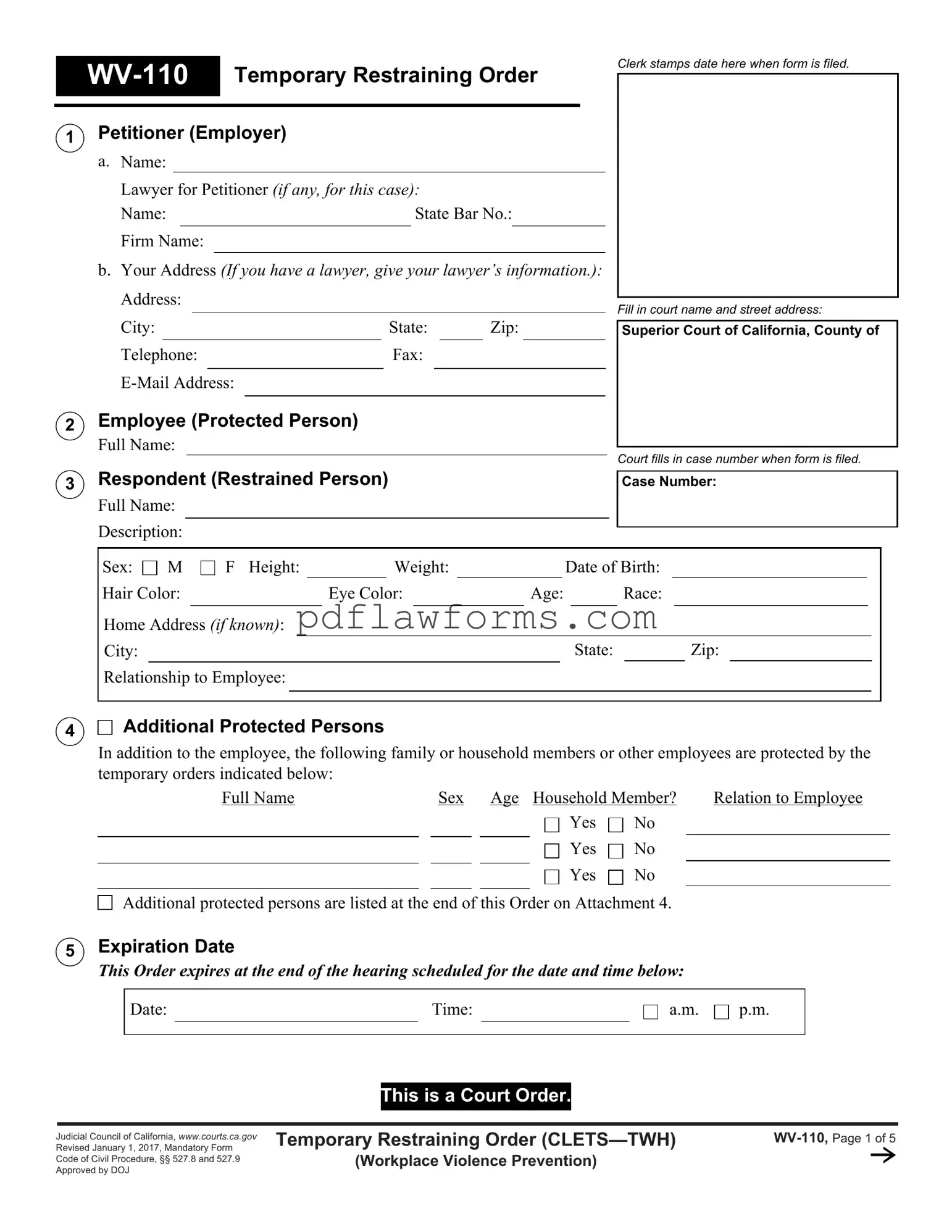The Fake Restraining Order form, specifically the WV-110, serves as a crucial legal document designed to protect individuals from potential workplace violence. This form outlines the necessary information required from the petitioner, typically the employer, including their name, address, and contact details. It also identifies the employee, referred to as the protected person, and the respondent, or the restrained person, detailing their personal characteristics such as age, sex, and physical description. The form allows for the inclusion of additional protected persons, ensuring that family members or other employees are safeguarded under the same temporary orders. Key aspects of the form include personal conduct orders that prohibit various forms of harassment and violence, as well as stay-away orders that mandate specific distances to be maintained from the protected individuals. Furthermore, the form contains provisions regarding firearms, stipulating that the restrained person must relinquish any firearms in their possession. This document is not merely a formality; it carries legal weight, and noncompliance can lead to serious consequences, including arrest and fines. Understanding the implications and processes associated with the Fake Restraining Order form is essential for both petitioners and respondents, as it plays a pivotal role in maintaining safety and order in the workplace.
